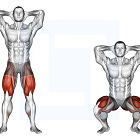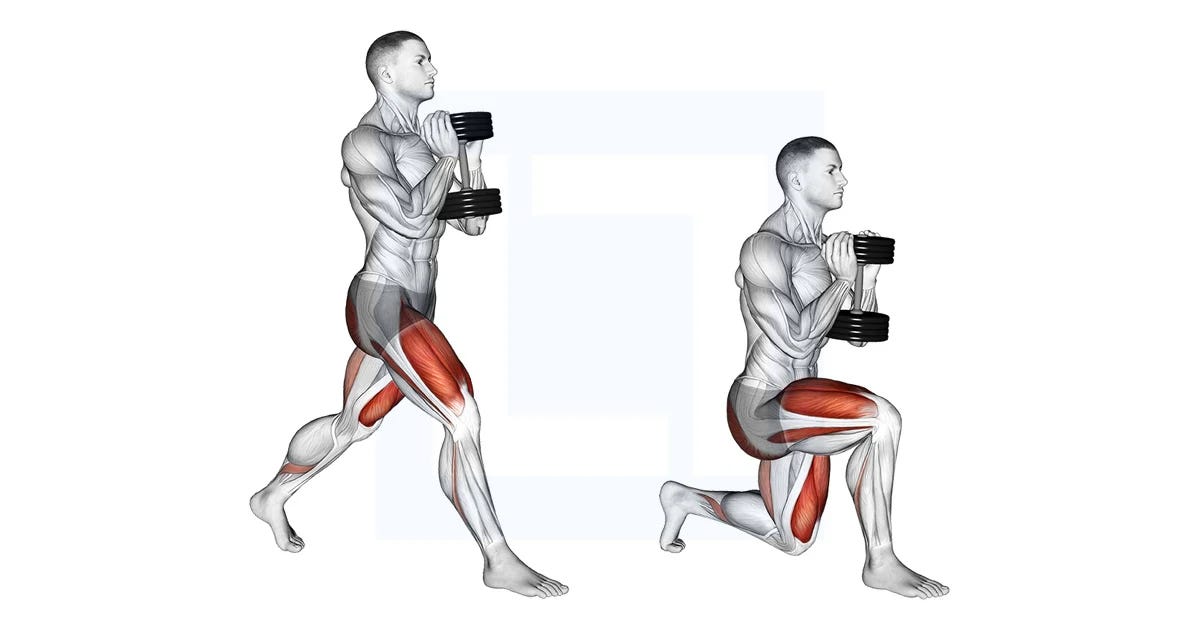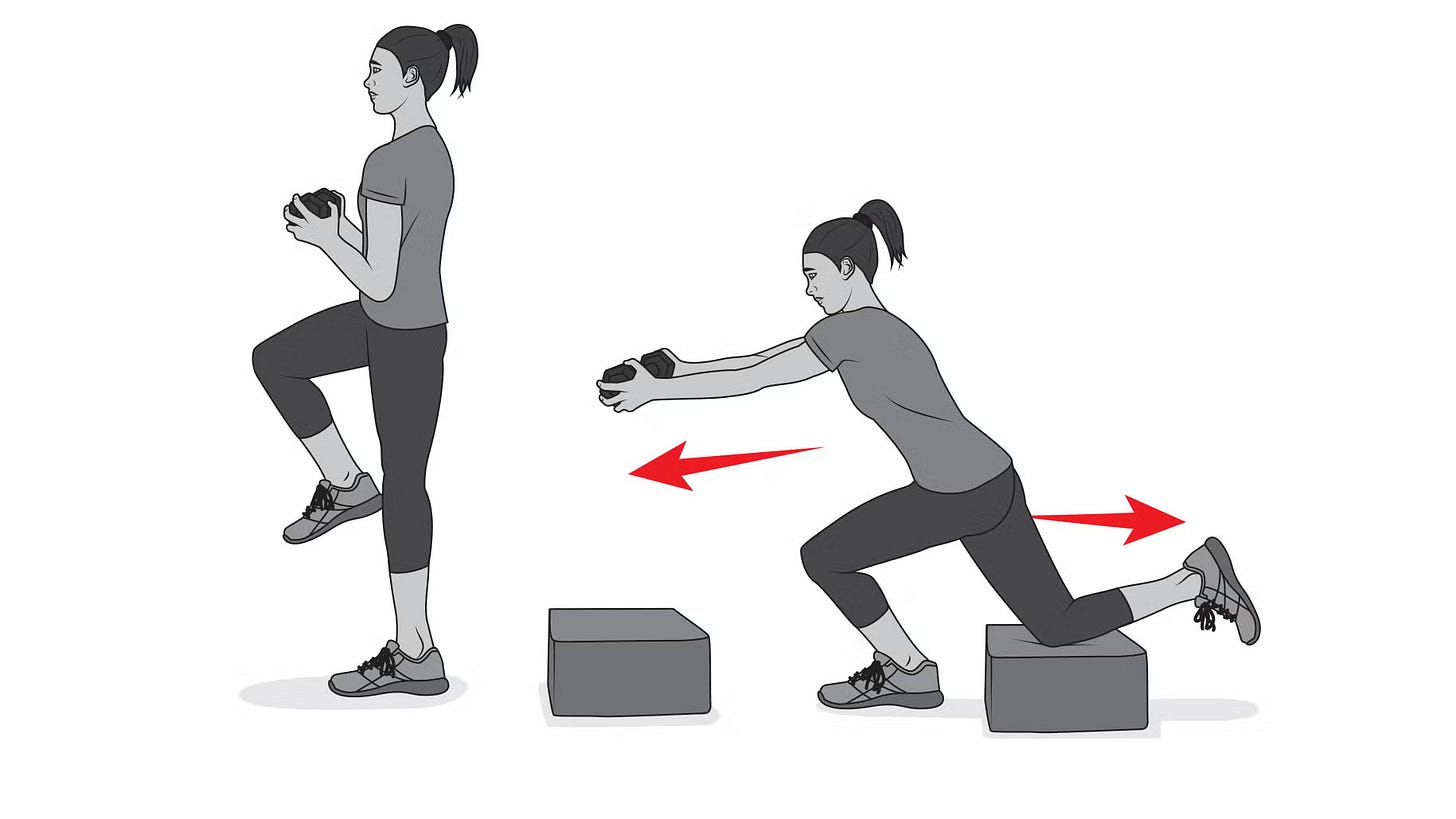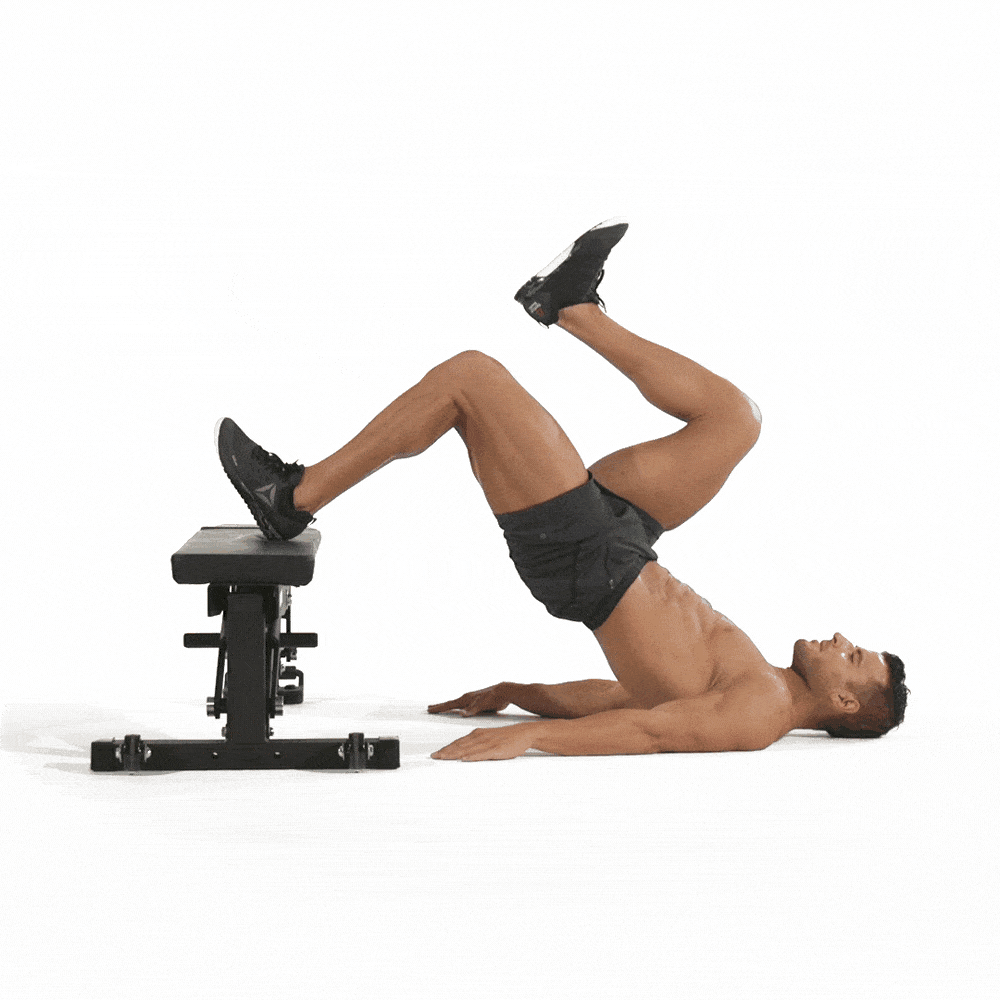Hey team,
Welcome back to Exercise Essentials.
This week we are keeping the focus on the lower body and diving into split/single leg exercises.
Touching Base:
ICYMI: Last week was the launch of Exercise Essentials, check it out here:
Push for Better: The Push-Up Challenge is officially underway, as of writing this, I am 4 days in. The goal is to raise money and awareness for mental health issues in Australia.
High Quality Creatine: Lack of sleep or want to crack that squat PB? Creatine can boost your cognitive and physical performance, get 5% off your next order from Wonder Foods Australia.
Upgrade to Paid: If you enjoy these articles and want to support the work that goes into them, just click the button below:
Split Leg or Single Leg, What’s the Difference?
Split leg or single leg is often used interchangeably to describe unilateral leg exercises.
To give you some clarity on these exercises, I am going to explain what I define as Split Leg and Single Leg.
Split Leg:
For me, a split leg exercise can be stationary (think split squat) or mobile (think walking lunges). For me, the key factor is that during the movement, there is a phase where both feet are on the ground, one in-front of the body and one behind the body.
Single Leg:
For the most part, this is a modifier of a bilateral exercise:
A Romanian Deadlift can become a Single Leg Romanian Deadlift
OR
A Squat can become a Single Leg Squat (also called a Pistol Squat)
You get the gist here.
Every now and then though, you do get a single leg exercise that has no bilateral counterpart.
Like a Skater Squat, which I will acquaint you with shortly.
“Some Examples!” I Hear You Cry.
Continuing with the theme, we will keep split and single leg examples separate.
Split Leg Exercises:
Split Squats
These are probably my go-to split leg variation.
Similar to Goblet Squats, there is a very minimal learning curve. The main challenge I find here can be balance, which can be easily solved by having one hand placed on a stable object (like a squat cage).
Dumbbell size can start to impede the exercise around the 30kg mark, but the transition to using a barbell is seamless.
Plate Overhead Walking Lunges
Want to spice up your warm ups, give these a crack. The plate being overhead as well as aiming to reach as far as you can with every step, just really opens up the anterior chain (muscles running up the front of the body).
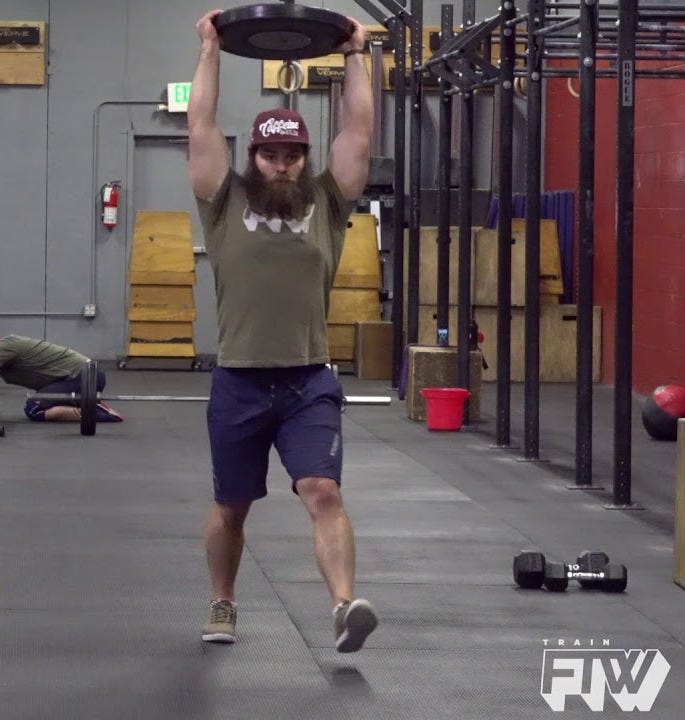
Single-Leg Exercises:
Skater Squats
These are a single-leg exercise that I prescribe a lot. They are still a challenging exercise, but compared to other single leg work like Pistol Squats, they are easier to learn and progress.
The goal is to try and get the floating knee to touch the ground, without the foot on that leg touching the ground.
Like the image shows, you can put a box or stack some plates under your knee if you can’t reach the floor at first. Then slowly lower the height of the box or plates until you can go knee to ground.
Great for building hip range of motion and then strength through that range.
Single-Leg Elevated Hip Thrust
Bit of a mouthful, but a great accessory hamstring exercise. Not much external load (if any) needs to be added to this exercise to make them very difficult.
If you focus on driving your heel into the bench, these will get your hamstrings feeling nice and sore the next day. And if that isn’t hard enough, try moving your hips further away from the bench.
Muscles Involved
This one isn’t quite as straight-forward as it was with squats last week, given that there are so many split and single-leg exercises.
With split-leg exercises, you are more likely to feel your quadriceps or gluteal muscles being the prime movers of the lift. With some synergistic actions from your hamstrings, adductors, calves, and abdominals. Basically the same as the muscles used for Squats.
With single-leg exercises, it’s really dependent on what the exercise is a variation of.
If it is a squat variation like a Skater or Pistol Squat, then similar to Split-Leg exercises, the quadriceps and gluteals are the prime movers, with other leg and abdominal muscles helping out.
If it is a hinge variation like a Single-Leg Elevated Hip Thrust or Single-Leg Romanian Deadlift, then the main muscles used with be the hamstrings, gluteals, and erector spinae, with some assistance from the calves and abdominals.
That’s All Folks!
I hope you enjoyed the second edition of Exercise Essentials.
Stay tuned because next week we will be looking at hinging movements (not a verb for using the dating app). After that, we will move onto every teenage boys favourite exercise group… Upper Body Push.
Chat soon,
Jono


